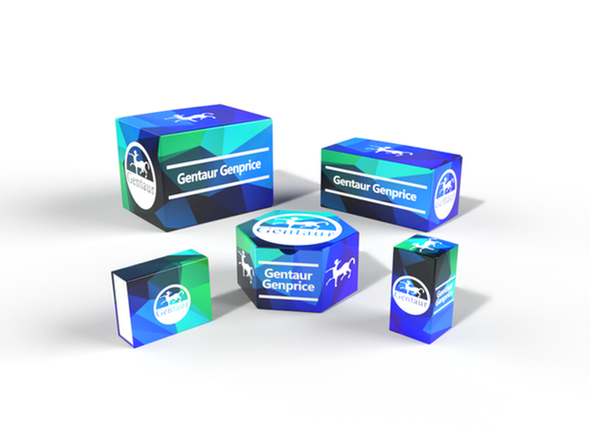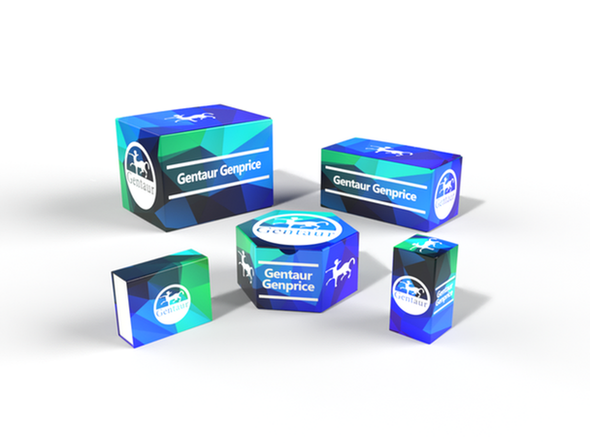749
Rat Prostaglandin E2 (PG-E2) ELISA Kit | KTE100822
- SKU:
- 749-KTE100822
- Availability:
- Usually ships in 5 working days
Description
Rat Prostaglandin E2 (PG-E2) ELISA Kit | KTE100822 | Gentaur UK, US & Europe Distribution
Application: This Rat Prostaglandin E2 (PG-E2) ELISA Kit employs a two-site sandwich ELISA to quantitate PG-E2 in samples. An antibody specific for PG-E2 has been pre-coated onto a microplate. Standards and samples are pipetted into the wells and anyPG-E2 present is bound by the immobilized antibody. After removing any unbound substances, a biotin-conjugated antibody specific for PG-E2 is added to the wells. After washing, Streptavidin conjugated Horseradish Peroxidase (HRP) is added to the wells. Following a wash to remove any unbound avidin-enzyme reagent, a substrate solution is added to the wells and color develops in proportion to the amount of PG-E2 bound in the initial step. The color development is stopped and the intensity of the color is measured.
Detection Method: Colorimetric
Conjugate: N/A
Sample Type: Cell culture supernatants#Serum#Plasma#Other biological fluids
Assay Type: Multiple steps standard sandwich ELISA assay with a working time of 3-5 hours. It depends on the experience of the operation person.
Kit Component: • Rat Prostaglandin E2 microplate
• Rat Prostaglandin E2 standard
• Rat Prostaglandin E2 detect antibody
• Streptavidin-HRP
• Standard diluent
• Assay buffer
• HRP substrate
• Stop solution
• Wash buffer
• Plate covers
Features & Benefits: Rat Prostaglandin E2 (PG-E2) ELISA Kit has high sensitivity and excellent specificity for detection of Rat PG-E2. No significant cross-reactivity or interference between Rat PG-E2 and analogues was observed.
Calibration Range: Please inquire
Limit Of Detection: Please inquire
Usage Note: • Do not mix components from different kit lots or use reagents beyond the kit expiration date.
• Allow all reagents to warm to room temperature for at least 30 minutes before opening.
• Pre-rinse the pipet tip with reagent, use fresh pipet tips for each sample, standard and reagent to avoid contamination.
• Unused wells must be kept desiccated at 4 °C in the sealed bag provided.
• Mix Thoroughly is very important for the result. It is recommended using low frequency oscillator or slight hand shaking every 10 minutes.
• It is recommended that all samples and standards be assayed in duplicate or triplicate.
Storage Instruction: The unopened kit should be stored at 2 - 8°C. After opening, please store refer to protocols.
Shipping: Gel pack with blue ice.
Precaution The product listed herein is for research use only and is not intended for use in human or clinical diagnosis. Suggested applications of our products are not recommendations to use our products in violation of any patent or as a license. We cannot be responsible for patent infringements or other violations that may occur with the use of this product.
Background: Prostaglandin E2 () is a primary product of arachidonic acid metabolism in many cells. Like most eicosanoids, it does not exist preformed in any cellular reservoir. When cells are activated or exogenous free arachidonate is supplied, PGE2 is synthesized de novo and released into the extracellular space. In vivo, PGE2 is rapidly converted to an inactive metabolite (13, 14-dihydro-15-keto PGE2) by the prostaglandin 15-dehydrogenase pathway. The half-life of PGE2 in the circulatory system is approximately 30 seconds and normal plasma levels are 3-12 pg/ml. In general, urine and culture media samples can be diluted, if necessary, and added directly to the assay well. Plasma samples should be purified prior to use. Because of the rapid metabolism of PGE2, the determination of in vivo PGE2 biosynthesis is often best accomplished by the measurement of PGE2 metabolites.
Alternative Names: PG-E2
Search name: PG-E2
Tag: PG-E2






